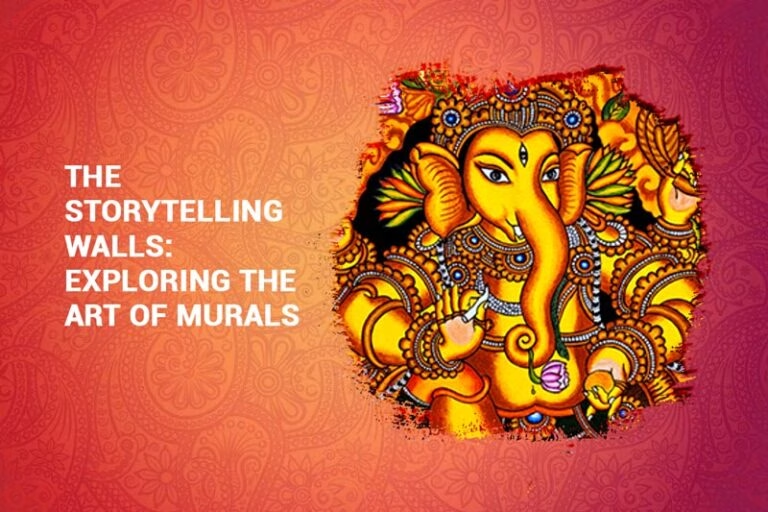Mural paintings in Kerala, with their stunning beauty and deep cultural meaning, serve as enduring reminders of the region’s rich artistic legacy. These intricate artworks grace the walls of temples, palaces, and sacred sites, narrating tales of mythology, spirituality, and daily life, intertwining strands of tradition and sophistication that have persisted for generations.
The origins of mural painting in Kerala can be traced back to ancient epochs, with traces of early murals discovered in temples and caves spanning over a millennium. Influenced by Dravidian, Buddhist, and Tantric traditions, Kerala mural art evolved its distinct style marked by elaborate details, lively hues, and spiritual subjects.
During the medieval era, mural painting flourished under the patronage of ruling dynasties like the Cheras, Pandyas, and Cholas. Skilled artisans, known as chitrakars or kalari panikkars, meticulously adorned temple walls and royal chambers with depictions from Hindu epics, celestial beings, and divine manifestations, showcasing their mastery of the craft. Kerala mural paintings are steeped in symbolism and allegory, drawing from Hindu mythology, folklore, and spiritual teachings. Each mural narrates a tale, conveying profound philosophical ideas and ethical lessons through vivid imagery and nuanced expressions.
The creation of Kerala mural paintings involves a methodical process demanding precision, endurance, and respect for tradition. Artisans commence by preparing the wall surface with a blend of lime plaster, sand, and natural adhesives, establishing a seamless canvas for painting.
Natural pigments sourced from minerals, herbs, and plant extracts are then employed to form a palette of dynamic colors, including hues of red, yellow, green, blue, and black. These pigments are combined with organic binders like tender coconut water or plant sap, ensuring enduring adhesion and brilliance.
With brushes crafted from natural fibers or even their fingertips, artists delicately layer paint onto the wall, gradually constructing the composition with intricate lines, elaborate motifs, and subtle color transitions. The meticulous attention to detail and skill infuse each mural with an air of grace and sophistication, elevating it to the realm of divine artistry.
In recent times, endeavors have been undertaken to safeguard and promote Kerala mural paintings as invaluable treasures of cultural heritage. Conservation projects, scholarly research, and educational initiatives have contributed to raising awareness about the significance of mural art and its role in Kerala’s cultural fabric.
Furthermore, contemporary artists and art aficionados have embraced Kerala mural painting as a wellspring of inspiration and ingenuity, exploring novel techniques, themes, and mediums to reinterpret this ancient art form for contemporary audiences. From murals adorning public spaces and historic landmarks to exhibitions showcasing the works of emerging talents, Kerala mural painting continues to flourish as a vibrant and evolving expression of artistic creativity and cultural heritage.

